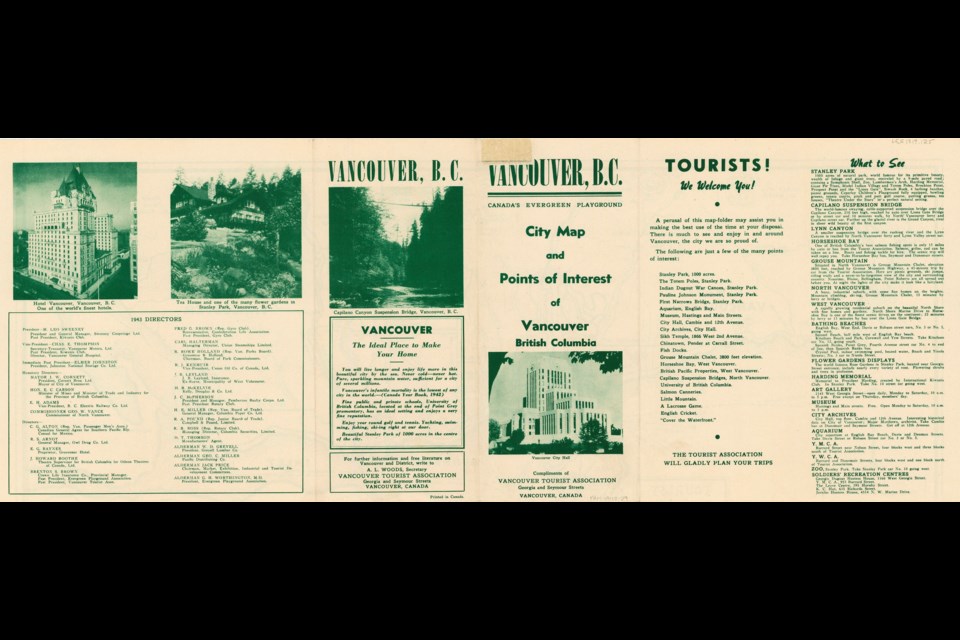While tourism has long been a part of the region's economy, many of the sights advertised today didn't exist when this tourism brochure was made.
Long before the Science World dome, the sails of Canada Place, and Gastown's steam clock showed up on postcards, this pamphlet advertised the wonders of the city. It also advertised Â鶹´«Ã½Ó³»to the world, with a few positive facts.
"You will live longer and enjoy life more in this beautiful city by the sea," states the tourism association in one section.
"Vancouver's Infantile mortality is the lowest of any city in the world," it adds just below.
Some sights are no longer here, while others are among the oldest sights around the city. Of course, the points of interest out in nature or involving the landscape are still here, like local beaches, Lynn Canyon and Grouse Mountain.
Some of the older sites still visited today listed are Stanley Park (though much has changed inside the iconic park), the Capilano Suspension Bridge, and Chinatown (which has also evolved over time). The First Narrows Bridge is also mentioned; today we know it as the Lions Gate Bridge.
There are a few differences, though. There's still an aquarium many tourists visit, but not the one listed (which was at the intersection of Davie and Denman streets). The Stanley Park zoo closed a while ago, as well. Other places have moved and are radically different, including the city museum and the art gallery (what we call the art gallery now was the courts in 1943).
And while Horseshoe Bay is still a destination for some, it's not really the fishing spot it used to be.
Other suggestions may seem unusual to some people today, like an "English Cricket" game, the British Pacific Properties of West Vancouver, and salmon canneries.
The pamphlet has a bunch of additional information, too, which tourists may not find so useful, like how many schools the city had at the time (68), what the leading exports were (lumber and canned fish led the way and no one should be surprised by that), and how big the city is (43 square miles).
It also has a few unhelpful lines, like essential information about soccer and rugby ("Both games are played in various parts of Greater Vancouver") and consulates ("Principal nations of the world have consular representation in Vancouver").
One interesting quirk of its publishing date are the references to World War 2, which was going on at the time. It doesn't pop up often, but there's a reference to how there is only one company doing sightseeing streetcar tours and how "in normal times Â鶹´«Ã½Ó³»is one of the most sport-minded cities in the world."
Click here for full-size images of , and in the brochure.
To see more of what the has in its vast collection, check out their website.



